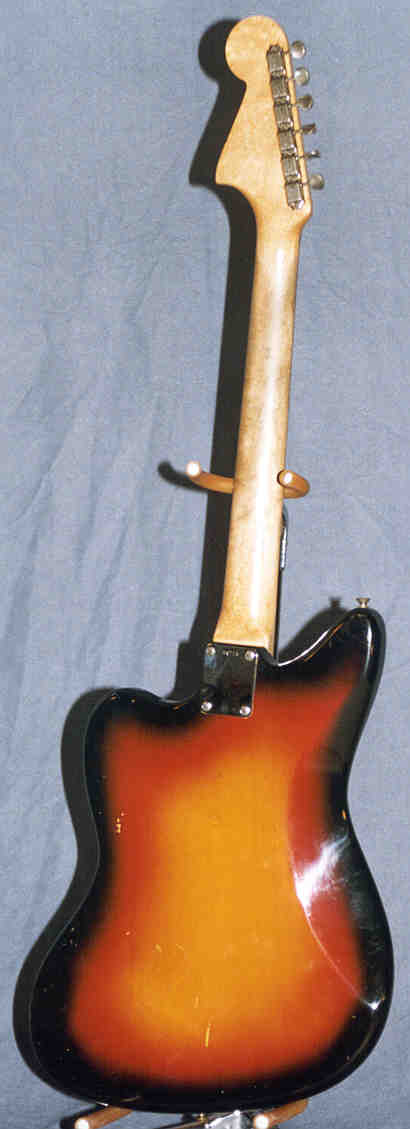
 Body:
Solid, 2-piece alder
Body:
Solid, 2-piece alder FACTOIDS & TRIVIA
The Fender Jaguar was designed by Leo Fender to update and improve upon the Jazzmaster. It was made from 1962 to 1975 and was the top of the line Fender until 1968-69 when Jimi Hendrix's use of the Stratocaster redefined the Fender line-up. The Jaguar’s pickups were more powerful and shielded which alleviated some of the electronic hum problems associated with the Jazzmaster. The shorter (24 inch) scale was favored by many guitarists for its playability. The Jaguar shared its unique rhythm circuit with the Jazzmaster which provided a presettable tone for rhythm playing. However, the slide switches on the Jaguar are not easy to use while playing and make a lot of noise when switching from one setting to another. The Jaguar, along with the Fender Dual Showman amp and Reverb Unit, were de rigeur for surf bands in the early 1960s. Like the Jazzmaster, the Jaguar was given a bound fingerboard and block markers in late-1966, and polyester lacquer finish in 1968. The Jaguar pictured is a very early model from April 1962. It has a slab rosewood fingerboard and was made during the first month that Fender switched from pencil dated necks to ink stamp dated necks.
FENDER JAGUAR (April 1962)

 Body:
Solid, 2-piece alder
Body:
Solid, 2-piece alder
Finish: Sunburst, nitrocellulose lacquer
Neck: 1-piece maple, bolt-on
Fingerboard: Brazilian rosewood (slab), clay dot markers
Number of Frets: 22
Pickguard: Tortoise/white/black/white plastic laminate
Bridge: Fender steel with mute; Floating Tremolo tailpiece, chrome
Nut: Plastic
Tuners: Kluson Deluxe, enclosed, nickel
Pickups: Two, Fender single coil
Controls: Master tone, master volume, two 3-way pick-up selectors, mute switch, rhythm circuit selector, tone and volume for rhythm circuit
Scale Length: 24 inches
Neck Width at Nut: 1 5/8 inches
Body Width at Lower Bout: 14 inches
Body Depth: 1 5/8 inches
Weight:
8.5 lb
Back
to the Fender Pix Menu